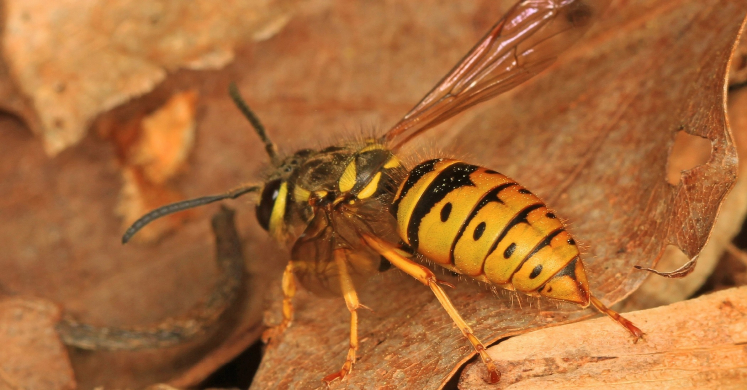Blog

#bioPGH Blog: Yummies for a Yellowjacket
 A resource of Biophilia: Pittsburgh, #bioPGH is a weekly blog and social media series that aims to encourage both children and adults to reconnect with nature and enjoy what each of our distinctive seasons has to offer.
A resource of Biophilia: Pittsburgh, #bioPGH is a weekly blog and social media series that aims to encourage both children and adults to reconnect with nature and enjoy what each of our distinctive seasons has to offer.
On Monday, the US Fish and Wildlife Service posted a video that was quite fascinating and perhaps a bit squeamish to their social media channels:
Did you know yellow jackets harvest meat in late summer? Within 24 hours, they completely cleaned this entire mouse carcass. These workers bring chewed up meat and fruit back to the nest to feed the larvae. The colony rapidly expands reaching up to 5,000 workers and 15,000 cells! pic.twitter.com/PoEy9HZ1mY
— U.S. Fish and Wildlife (@USFWS) August 15, 2022
Did you know that yellowjackets would eat carrion? I will admit — I did not! I knew they would eat other insects…and now that I am thinking about it, I have seen them hanging around the cold cuts at picnics…wait, what else don’t I know about yellowjackets? Let’s explore these meat-eating, stinging neighbors!
Well, first things first in a yellowjacket conversation: who are we talking about? The name “yellowjacket” is colloquially used for a variety of related species across the US, but I’m going to be focusing on the eastern yellowjacket, Vespula maculifrons, which is widespread here in eastern North America. Other wasps or hornets that we might spy in the area (or even refer to as “yellowjackets”) are the bald-faced hornet (Dolichovespula maculate), paper wasps (Polistes sp.), and European hornets (Vespula crabro, introduced in the nineteenth century by Europeans).
Our local yellowjackets usually live in underground nests, which can be home to thousands of individuals; and within their colonies, those individuals all have specific roles to play. Like honey bees, which we may be more familiar with, yellowjacket colonies also consist of a queen, worker females, and males. Again, like with bees, queens are responsible for reproduction and worker females will forage, tend to the eggs/larva, and build and maintain the colony’s nest. Late in the summer, new future queens (called “gynes”) will find males to mate with before entering diapause — kind of like an insect hibernation. Then in the spring, those rising queens emerge and begin building a new colony. Until her first brood of the year grows up, she will handle foraging and building cells for the new young. Then, once that first generation takes over, she can focus on raising offspring (the queen can have multiple generations of young throughout the summer). Yellowjackets overall are simply busy all through the warm months!
While yellowjackets are indeed active all summer, we may notice that this time of year, yellowjackets become a bit more more aggressive in their foraging. There is a good reason for this: back in the hive, up to 30% of the young are gynes, those possible future queens; and those queens need to be fed to grow, mate, survive the winter, and begin raising their own broods the following spring. That is a tall order, and workers take their foraging job seriously. In addition to insects, some fruits, maybe even some nectar here and there, yellowjackets will also seek out our own favorite picnic foods and beverages at those late summer gatherings — especially since our lemonades and grilled chicken are full of sugar and protein, all the things a little growing yellowjacket needs.
This brings us back to that US FWS video I found on Monday — yellowjackets will even eat dead animal meat to satisfy their nutritional requirements. But that is just nature! Nothing goes to waste, everything serves a purpose. So while we may guard the openings of soda cans at our Labor Day picnics from our yellowjacket neighbors, those little winged neighbors also keep populations of pest insects in check through their dining habits. One never stops learning about the wild world!
Connecting to the Outdoors Tip: You may guess where this tip is heading…yellowjackets are a species best admired from distance. Unlike bees, they can sting multiple times, which can either just be plain painful or it can be dangerous for someone with an allergic reaction. So even though we may want to show our appreciation to yellowjackets for eating the pests that nibble at our gardens, a long-distance “thank you” and perhaps some native flowers in that garden are more than sufficient!
Resources
Penn State Extension: Eastern Yellowjacket
University of Florida Featured Creatures: Yellowjackets and Hornets
Images: Cover, Judy Gallagher, CC-BY-2.0; header, Wikimedia user Rrburke, CC-BY-SA-3.0

